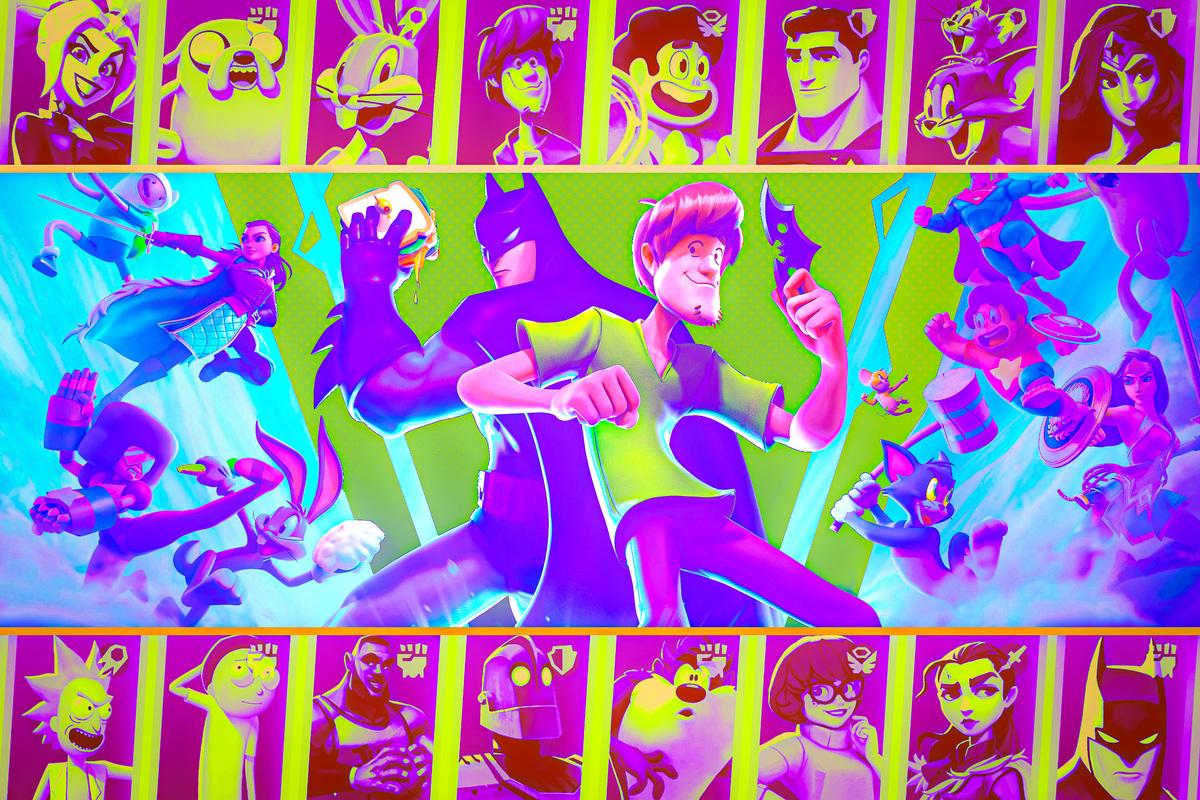Where Do Fighting Games Go From Here?
There’s a fundamental tension at the heart of fighting games: They’re big business, but also a niche. Can simpler gameplay or “free-to-play” titles like ‘MultiVersus’ take the genre truly mainstream?
MultiVersus was a hit, until it wasn’t. There were more than 150,000 concurrent users playing the Super Smash Bros.–esque platform brawler at its peak in July, and more than 20 million players total, less than a month after the game’s release on PC, Xbox, and PlayStation. The player base has shrunk sizably in the past couple months. Now it’s on par with the typically low post-launch player counts for traditional fighting games such as Street Fighter and Tekken, and it’s lagging behind the current player count for Brawlhalla, another online brawler released all the way back in 2017. Still, the early days of MultiVersus have been a peculiar success story, offering an optimistic glimpse of the future of online multiplayer fighting games.
Published by Warner Bros., MultiVersus contains a star-studded IP crossover roster, including Batman, Game of Thrones’s Arya Stark, and—by virtue of his top billing in Space Jam 2—LeBron James. Last year, Nickelodeon published a similar title, Nickelodeon All-Star Brawl, starring SpongeBob SquarePants and Helga Pataki, to tepid reviews and fleeting interest. MultiVersus broke through on the easy appeal of its character roster, yes, but also on the strength of its retail price, $0.00, compared to Brawl’s launch at $49.99.
That said, MultiVersus is just one of many buzzy online multiplayer games to launch in the five years since Fortnite. Like Fortnite, MultiVersus is “free to play.” In other words, you’re free to download the game, you’re free to use MultiVersus’s four sample characters (of 22—for now—total), you’re free to grind matches, and you’re free to spend the in-game gold earned from those matches to unlock new characters, costumes, and flairs. Alternatively, players can buy a “founder’s pack” in one of three editions, ranging from $40 to $100, to unlock a variety of perks up front. But the free-to-play model means MultiVersus turns its surest profits on players who stick with the game and purchase the other in-game currency, “Gleamium,” which is far more valuable than gold but can be bought in bundles only with real money. These are microtransactions; that’s how they get you.
The emergence of the free-to-play model launched a long-running series of arguments over the ethics of such microtransactions, especially since these games tend to target kids. Last month, the studio Blizzard took Overwatch—both the original game and its just-released sequel—free to play, locking some heroes behind paywalls and drawing unfavorable comparisons to the original game’s sometimes controversial but still relatively benign loot-box system. There are many ways a publisher might go about turning a video game into its own storefront, and while not all video games with microtransactions are free to play, free-to-play games rely on microtransactions most decisively.
The traditional fighting-game franchises, such as Street Fighter and Tekken—not to mention Smash—have implemented in-game currency, microtransactions, and paid downloadable content for new characters and combat areas in recent releases, but they’ve otherwise resisted total conversion to the free-to-play model. There’s been some recent clamoring for the forthcoming Street Fighter 6 to be free to play; proponents imagine this would open the series to a massive, MultiVersus-sized influx of new players. But the comparison isn’t so simple. MultiVersus made a splashy debut with a $100,000 prize pool for a 2v2 tournament at the Evolution Championship Series esports competition in August, but otherwise the game hasn’t proved as sustainably competitive as its progenitor, Smash. It is, for now, for better or worse, a casual game.
The video game industry has yet to turn a free-to-play title into a truly competitive fighting game. This isn’t for lack of trying in recent years. Currently, Riot Games is developing “Project L,” a 2D team fighter (à la Marvel vs. Capcom) with a character roster pulling from the publisher’s long-lived multiplayer online battle arena flagship, League of Legends. The early hype has made Project L out to be a genre superweapon, a blockbuster title sure to greatly expand the typical player base for fighting games to a new generation of casuals. Project L is the most anticipated launch of a fighting-game franchise in recent memory but also, for some, a worrisome sign for the future of fighting games in general. Riot says Project L, like MultiVersus, will be free to play, and the game will reportedly ditch or at least deemphasize motion inputs—the fast and fussy swivel presses—such as the classic forward-down-forward motion for Ken’s Shoryuken, popularized by Street Fighter II in the 1990s.
This brings up another pressing concern regarding the future of fighting games: Are they too hard? It’s a nagging question that’s frustrated the fighting-game community for decades. I’d say no—it’s not hard to button smash your way to success in lower ranks, it’s just not nearly as rewarding as learning, improving, and mastering. The inputs can be tricky, and properly stringing the inputs into longer combinations in the heat of a real match might take several hours of practice for a newcomer. Even then, mastering the combinations for one character still leaves the player with so many other characters and archetypes to learn. It’s an intensive commitment. Until a player learns these fundamentals, they’re likely misapprehending the core gameplay, losing online matches, internalizing bad habits, and growing impatient with the game, quitting in favor of something more immediately rewarding. That’s fine for the publisher when the player has already paid the retail price, but a free-to-play title has more to lose from a raised skill floor. The free-to-play game must somehow keep even the most casual newcomers engaged, so it’s tempting to relax the most obvious barrier to entry for competitive titles: the difficulty curve.
Free-to-play games aren’t inherently simplistic. After all, Fortnite is the original free-to-play megahit, and Fortnite isn’t exactly easy; the game’s signature building mechanic is notoriously hard to learn and even harder to counter for newcomers who just want to loot and shoot. But Fortnite and cousins like PlayerUnknown’s Battlegrounds were rebuilding the battle-royale genre and writing its new rules from scratch. Fighting games, on the other hand, have a much older series of conventions dating back to the early 1990s, with distinguished developers and skilled communities creating a distinct subculture. There’s a fundamental tension here: fighting games are big business, and yet fighting games are a niche. The genre needs new players to survive, but even the most naive newbies likely won’t stick around to play a free game that’s too shallow to engage them for more than a few hours with or without motion inputs.
Should Street Fighter 6 be free to play? Should Project L disavow the dreaded quarter circle? Only if Capcom and Riot are prepared to manage expectations: Lowering the skill floor for new players may prove pointless if you won’t lift them up and empower them to learn some deeper mechanics eventually. MultiVersus started strong with its free-to-play hook and its star-studded roster, but now it’s gone soft with its shallow gameplay and its overburdened servers. It’s as much a success story as it is a cautionary tale.

